

![]()
![]()
This Page:
Wally Moes
Henriëtte H. Ronner-Knip
Margaretha Roosenboom
Thérèse Schwartze
![]()
![]()
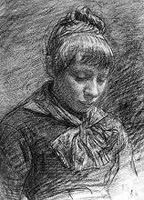
Self-Portrait--representative work
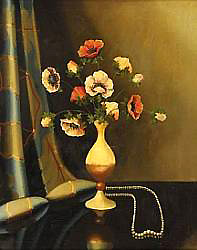
Motiv från Lofoten--representative work
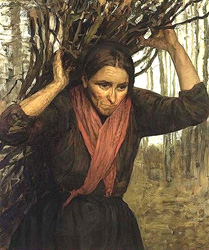
Faggot
Gatherer--
representative work
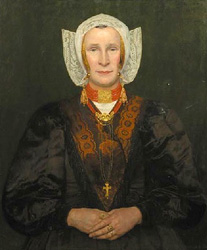
Lady from Laren
Wearing her
Sunday Costume--
representative work
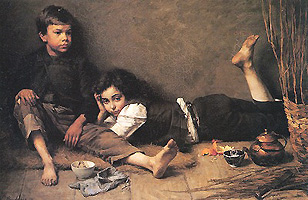
Lunch Hour--
representative work.

Kleine Jongen met Krant
--representative work
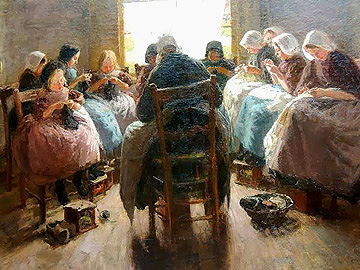
Knitting School--
representative work.

Sleeping Woman
--representative work
In a Village Church and Just Awakened and
Praying Together (images unavailable)--
exhibited in Fine Arts Palace, 1893 Exposition
Wally Moes was born in Amsterdam where she studied art at the special class for women at the Amsterdam Academy of Fine Arts under August Allebé and Richard Burnier. In Paris, she became friends with artist Thérèse Schwartze (see entry below) and was impressed with the work of Jean-Francois Millet. As a result, when she joined the Larense school of artists, she often painted the poor living conditions of the peasants in that area. Moes was also a writer in her later years, publishing a collection of regional tales Larensche Dorpsvertellingen (Laren Scheeren Village Tales) in 1911 and an autobiography Heilig ongedula (Holy Impatience) in 1916.
![]()
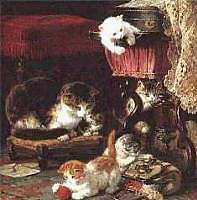
Mischief Makers--
representative work
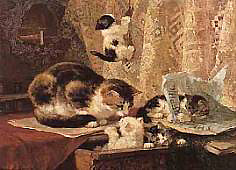
Making Mischief--
representative work
It is unclear which "Mischief" painting (above) was
exhibited in the Fine Arts Palace, 1893 Exposition.
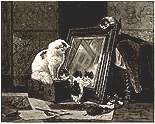
Coquetry--exhibited in
Fine Arts Palace, 1893 Exposition.
In Confidence (image unavailable)--
exhibited in Fine Arts Palace, 1893 Exposition.
Henriette Ronner Knip was the most famous female Dutch painter of her times, as well as a third generation artist in the four-generation Knip family of artists. Born in Amsterdam, she was a largely self-taught artist, although her artist-father (Josephus Augustus Knip) gave her her earliest lessons. After her marriage, Ronner-Knip lived and painted in Brussels where she was widely known for her dog paintings during the 1850s-1860s and for her cat paintings during the last thirty years of her life. The King of Belgium awarded her the Cross of the Order of Leopold.
![]()
(Note: Some sources spell her first name "Margarite.")
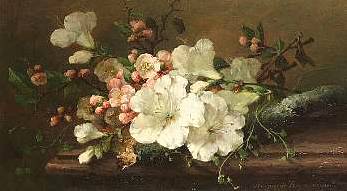
Still Life with Blossoms--representative work.

Still Life with Flowers--
representative work

Lelies, sinaasappel
en blauwe druiven--
representative work

Garland of Roses--This may or may not be the
"Garland of Roses" (oblong) exhibited at the
Fine Arts Palace, 1893 Exposition.
Garlands of Roses (upright); A Branch of Roses; Iris;
and Helianthus (images unavailable)--exhibited
in Fine Arts Palace, 1893 World's Exposition.
Margaretha Roosenboom was a Dutch artist well-known for her floral still life paintings. She studied with her artist-father Nicolaas J. Roosenboom and with her grandfather Andreas Schelfhout, and was married to landscape painter J. G. Vogel. One source lists her complete name as "Margaretha Cornelia Johanna Wilhelmina Henrietta Roosenboom."
![]()
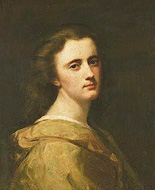
Self Portrait, age 16--representative work.
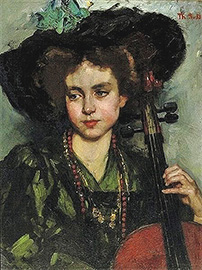
The Cellist 1918--
representative work.

Queen Wilhelmina
--representative work.

Portrait of Aletta Anna
Reiniera Ansingh 1883
--representative work

Portrait of the Doctor of the Family
Schwartze [Dr. Salomon Benjamin
Druif] 1912--representative work.
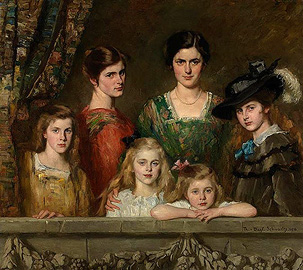
The Six Boissevain Girls 1916--
representative group portrait of six
daughters of Charles E.H.
Boissevain
and wife Maria Barbera Pijnappel
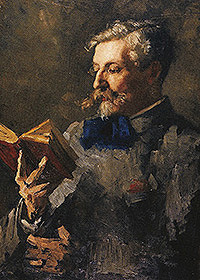
Anton Van Duyl [her husband]
--representative work.
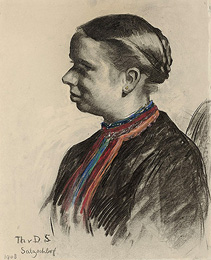
Portrait van een Oostenrijkse
1908--representative work.
.jpg)
Catharina Josephina
den Tex-Biben
--representative work.
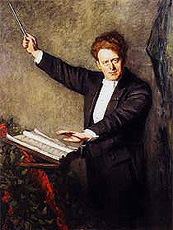
Willem Mengelberg 1912
--representative work.
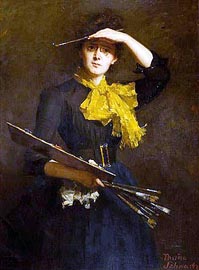
Self-Portrait 1888--exhibited
in the Fine Arts Palace,
1893 Exposition.
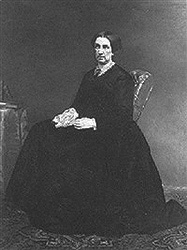
Portrait of a Lady Seated
--This painting may be the
portrait of her mother
exhibited in Fine Arts
Palace,
1893 Exposition.
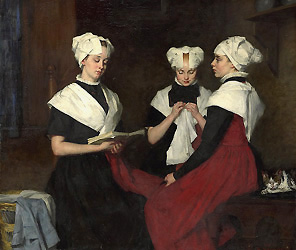
Three Orphan Girls 1885--
representative work.

The Orphan Girls, Amsterdam
(alternate title: Psalm 140.9)
--exhibited in Fine Arts
Palace, 1893
Exposition.
The Dutch artist Thérèse Schwartze was born in Amsterdam where her first art teacher was her portrait-painter father. Later she studied in Munich with Gabriel Max and Franz von Lenbach, in France with Jean-Jacques Henner, and then for eight years in the women's special classes at the Amsterdam Academy of Fine Arts. She was considered one of the best Dutch portrait painters of her time and received several commissions from the royal family. However, some critics felt that the large sizes of some of her paintings were "unfeminine." Other family artists were her sister Georgine and her two nieces, including Lizzy Ansingh (pictured in The Inmates of my House). Some of her pictures are signed with her married name van Duyl-Schwartze.
![]()
![]()
Go to French Women Painters, p. 1
Return to Women Painters Index
Return to Site Index
![]()
![]()
Text written by K. L. Nichols
Painting, top of page: Marie Konstantinovna
Bashkirtseff,
In the Studio (1881).
Return to Nichols Home Page
Suggestions/Comments: knichols11@cox.net
Posted: 6-25-02; Updated: 5-11-20